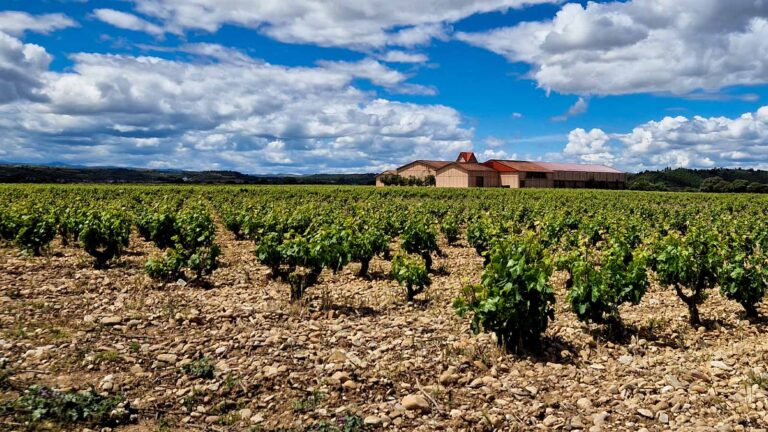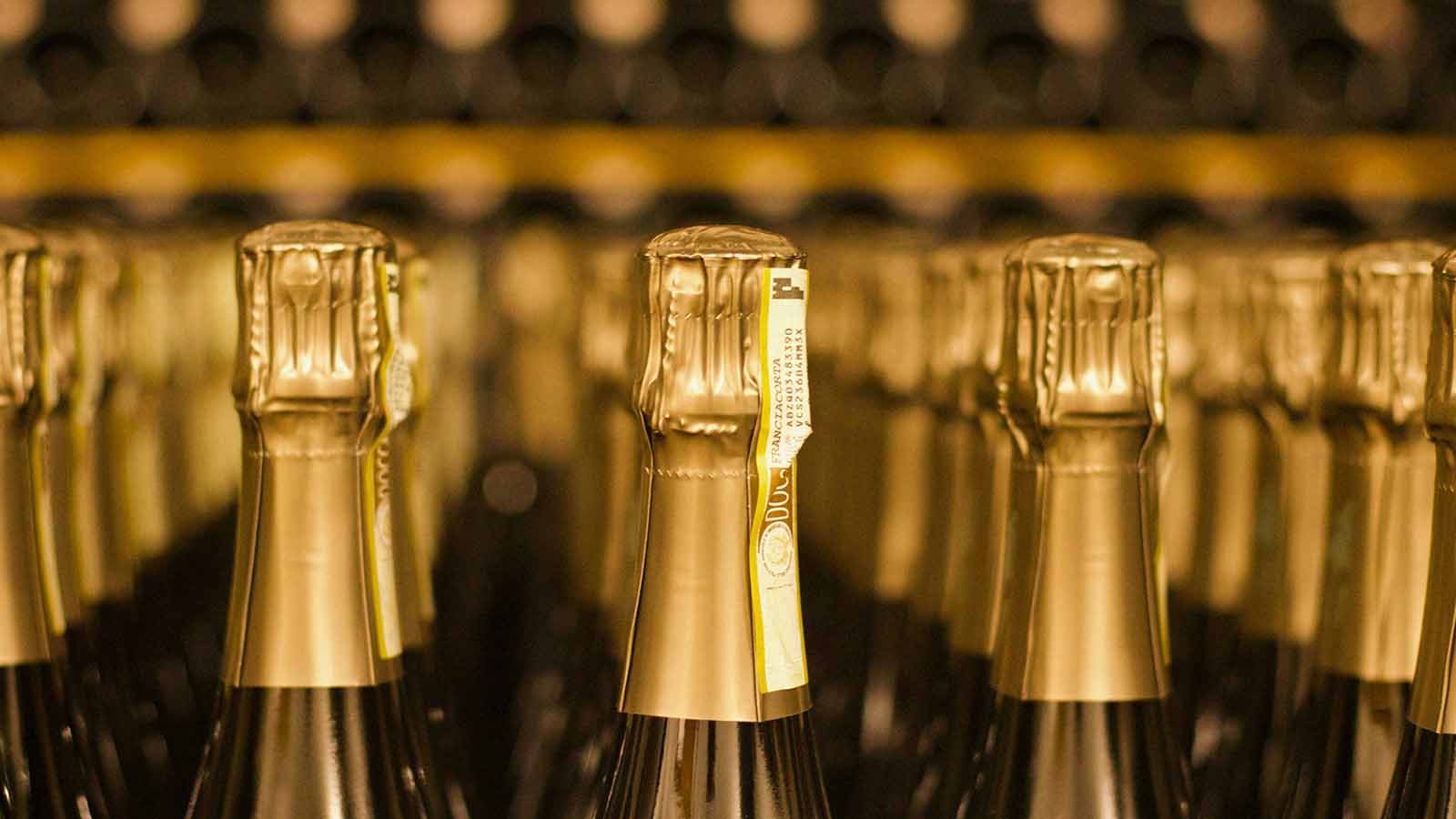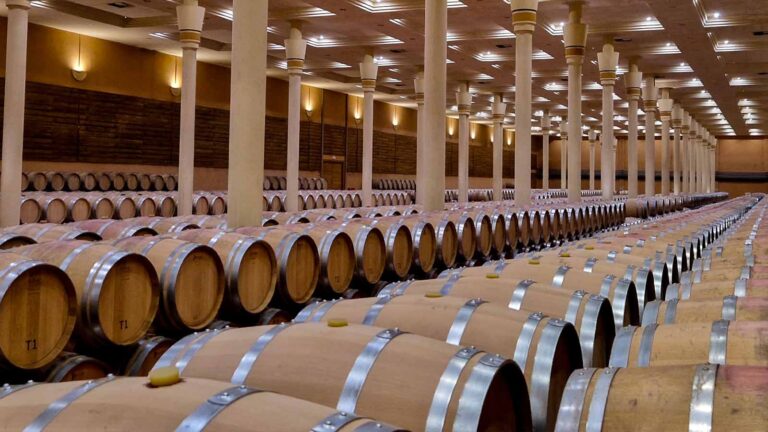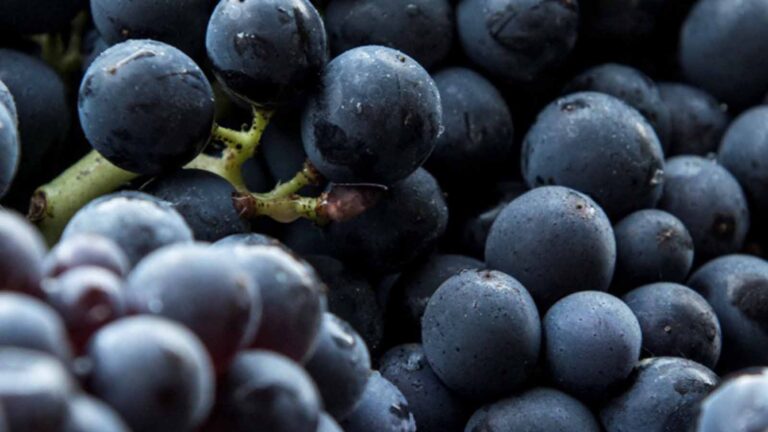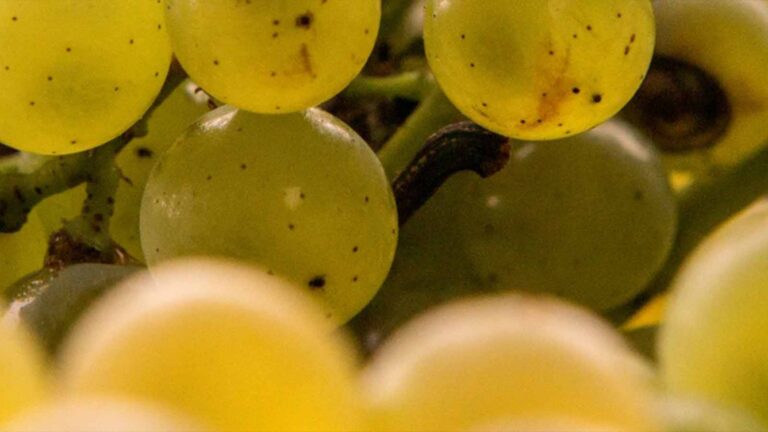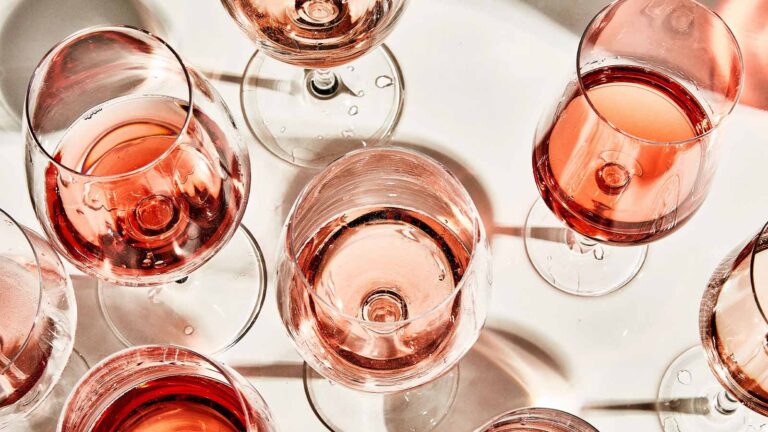Making the finest champagne depends first on attaining the purest possible must. This is achieved by harvesting the crop by-hand, gently pressing grape bunches whole and ensuring that the contact between the juice and broken grape skins is minimal. Many champagne houses believe the traditional basket presses to be the gentlest method of pressing. The large surface area of the press and small fruit loads ensure that must does not drain over crushed grapes, absorbing tannins on route. Pneumatic or bladder presses are also commonly used. They are much faster. The juice is released from the press in order of quality. The more the fruit is pressed the greater the tannin, pip and skin content. Better-quality wines are made from only the free-run and first pressings.
Second pressings may be used, but for lesser wines. From the press the must is pumped to small vats, each containing only one press-load of juice so that the choice in the final blend can be as precise as possible. On route the must may be chilled to prevent any bacterial activity and to stop fermentation beginning before débourbage (clarification) can take place.
Skin and other impurities can be settled out of the wine at ambient cellar temperatures, but a quicker and more thorough clarification is achieved by chilling to -5°C. Purity, and therefore stability, can be increased by fining the bentonite clay. Many winemakers argue that if clarification, at this stage, is too thorough, the complexity of flavours in the wine will be reduced. Once clarified the wine is racked into clean fermentation vats. The size and composition of the vats are of key importance, small vats enable greater control of the fermentation and stainless steel ensures cleanliness. However, two of the best champagne houses, Krug and Alfred Gratien, still prefer to ferment their wines in oak barrels.
Other important considerations at this stage include the choice of yeast, chaptalisation and malolactic fermentation. ‘Cultured’ yeasts will usually be used, their effect on the wine being more predictable. The use of ‘wild’ yeasts can be a gamble, though they may increase a wine’s complexity. The wine’s potential alcohol almost always needs raising and it is invariably chaptalized. Malolactic fermentation is encouraged as it softens and rounds the wine and adds to its stability. After fermentation, the wine is once again stabilized before assemblage (blending), the most important stage of the method champenoise process.
The suspended matter is precipitated out of the wine by cold stabilization, preventing both the formation of tartrate crystals and any unwanted yeast or enzyme reactions which may impair the wine. It is then racked off the deposit and further clarified by filtering and fining. Great skill and experience are required to create a wine of consistent and fine house style-non-Vintage champagne. Tasting after tasting will be set up, and some wines of which will go into various proportions into the final blend. In years where the quality of the harvest is particularly high, a certain proportion will be used to make Vintage blends (from only one year). In other years’ reserve wine is of more importance and is blended in to maintain the house style – a closely guarded secret.
Blending together numerous wines of different chemical properties encourages the presence of unwanted matter and the wine must again be clarified. Producers aim to maximize purity and stability of the blend by a further period of cold stabilization, filtering and fining. Gelatine is the most common fining agent used in Champagne. The wine then undergoes its third and final racking.
After the final racking, the wine is transferred to the bottling line. But before being bottled a mixture of reserve wine, sugar and selected yeast culture is added to the base wines to simulate a second alcoholic fermentation. Sugar is necessary in the blend because all base wines for champagne are dry and devoid of fermentable sugar. The type and amount of yeast used will vary according to the style of the champagne.
Champagne gains its sparkle by undergoing a second fermentation, this time in the bottle. As the sugar in the liqueur de tirage is converted to alcohol, CO² bubbles dissolve in the wine, completing the transformation from still to sparkling. The thickness of the glass can withstand the pressure which builds up as CO² is produced. Metal crown caps are used to seal the wine during the fermentation. Keeping the temperature low slows down this process and results in smaller bubbles in the champagne – one indicator of good quality.
In most top champagne houses, the second fermentation and subsequent maturing of the bottles takes place in deep cool chalk cellars. The ageing period may last as long as 20-50 months. During this time the wine gains in creaminess and complexity through contact with its yeast sediment (lees). The bottles are stacked, separated by laths (lattes). The care in their stacking is to ensure that should on bottle explode during fermentation, the others will be disturbed as little as possible. Re-stacking and shaking of the bottles at intervals are carried out so that the sediment does not stick to the bottle, which would complicate clarification.
When secondary fermentation is complete the lees remaining in the bottle must be removed. The bottles are transferred to wooden racks, then each bottle must be gradually riddled (tilted from horizontal to vertical) to encourage the sediment down into the neck of the bottle. Performed manually this is painstaking work, skilled remueurs are employed to rotate and fractionally tilt the bottles until they are fully perpendicular and ready for disgorgement. The operation may last several months. Using gyropalettes shortens the period over which clarification occurs to as little as a week. The principle is the same as remuage but mechanized and far more efficient. The bottles are stacked upside down on pallets and mechanically rotated every eight hours, which causes the sediment to spiral down to the neck. Current experiments with tiny porous beads my eventually render both remuage and gyropalattes obsolete. These beads actually contain the yeast. At the end of fermentation, they fall to the neck of the bottle without urging and are easily removed.
Once the yeast sediment has settled, finer champagnes are matured for up to 5 years sur pointes (upside down). The flavour is further enhanced by contact with the sediment in the neck of the bottle. The disgorging process to remove the sediment is delayed as long as possible. Disgorging is essential but disruptive because it briefly exposes the wine to air, increasing its natural oxidation rate and thus reducing its ageing potential. It requires extreme dexterity and speed to remove the crown cap and quickly dislodge yeast sediment in the neck of the bottle without losing any wine. Freezing the sediment in the neck of the bottle provides a much tidier and more efficient method. The pressure from the champagne forces rapid ejaculation of the sediment when the crown cap is removed.
Dosage, sweetening with liqueur d’expedition (wine and sugar) is essential for most champagnes, which at this stage may be quite acid. Those which have undergone a long maturation will have been softened by contact with yeast sediment and may not need dosage, but they will need topping up with wine to fill the bottle after the removal of the sediment.
Immediately after the liqueur d’expedition has been added, the bottles are corked, automatically shaken to distribute the liqueur de tirage and then labelled. At this stage, some wines will undergo additional ‘cork age’. This is not encouraged by most champagne houses but old champagne does have a specialist market. This process will change the style of the wine quite considerably, as the alcohol combines with various acids to create esters, which introduce scents of coffee and caramel, even hints of mushrooms.
